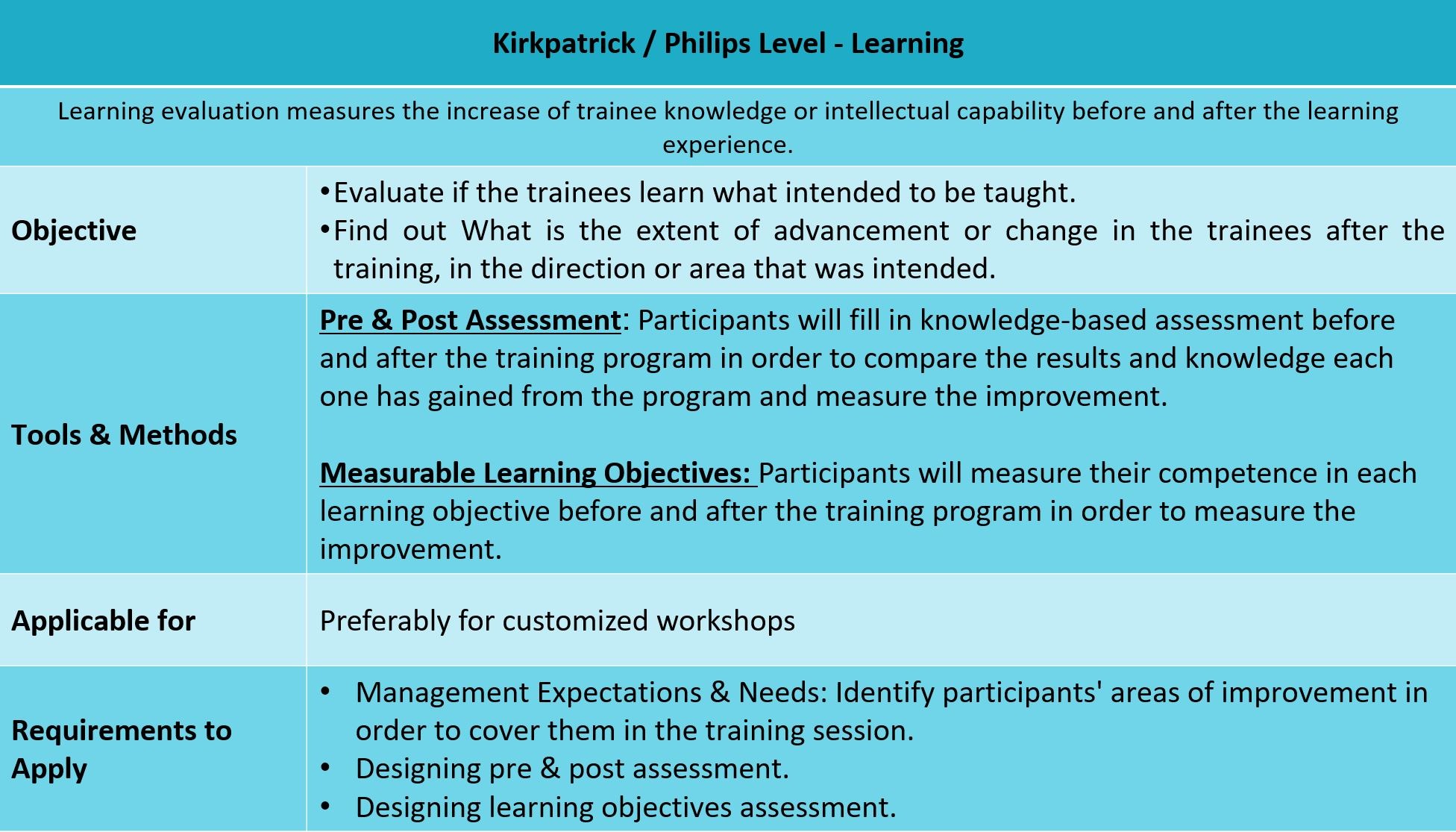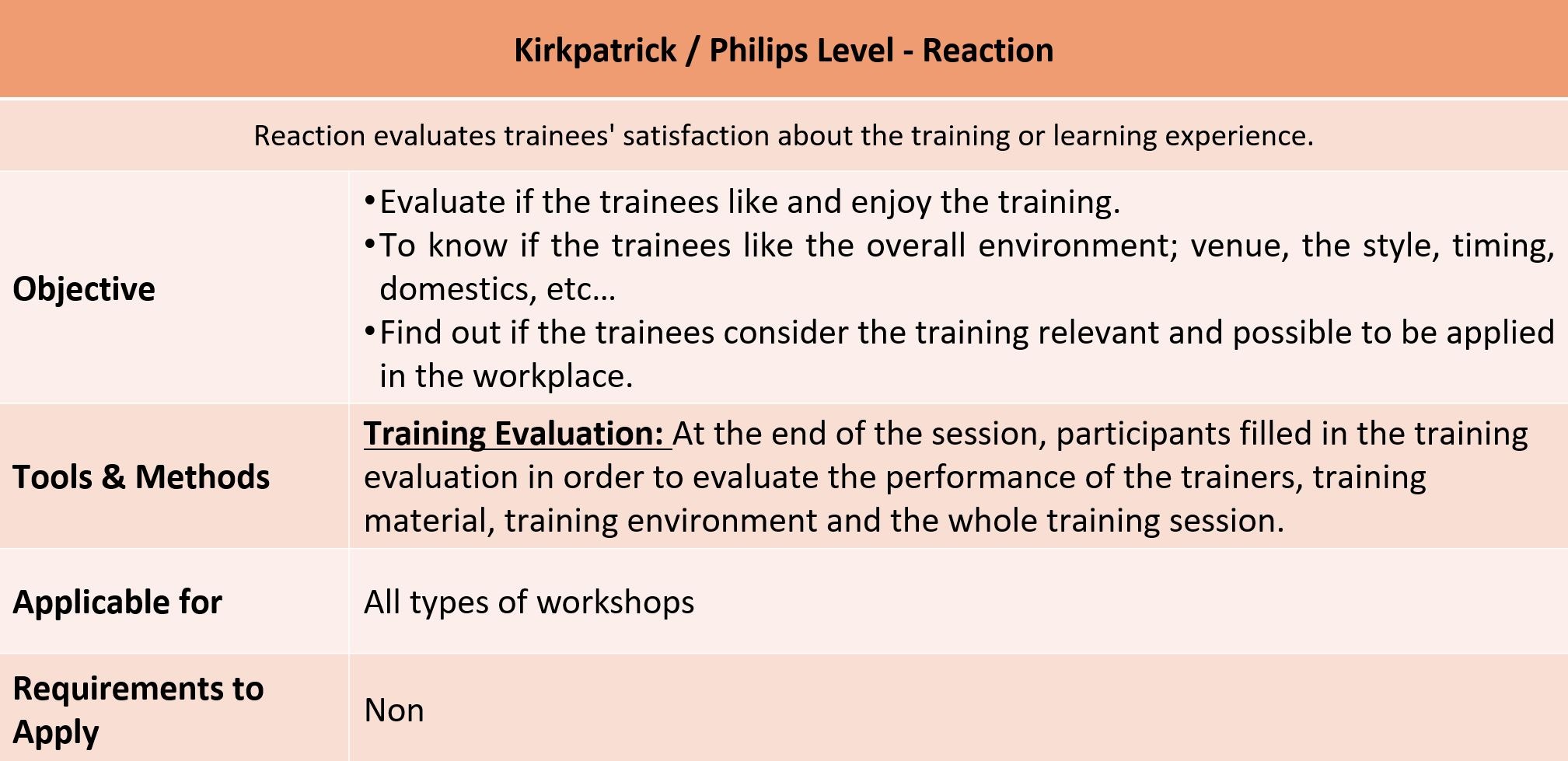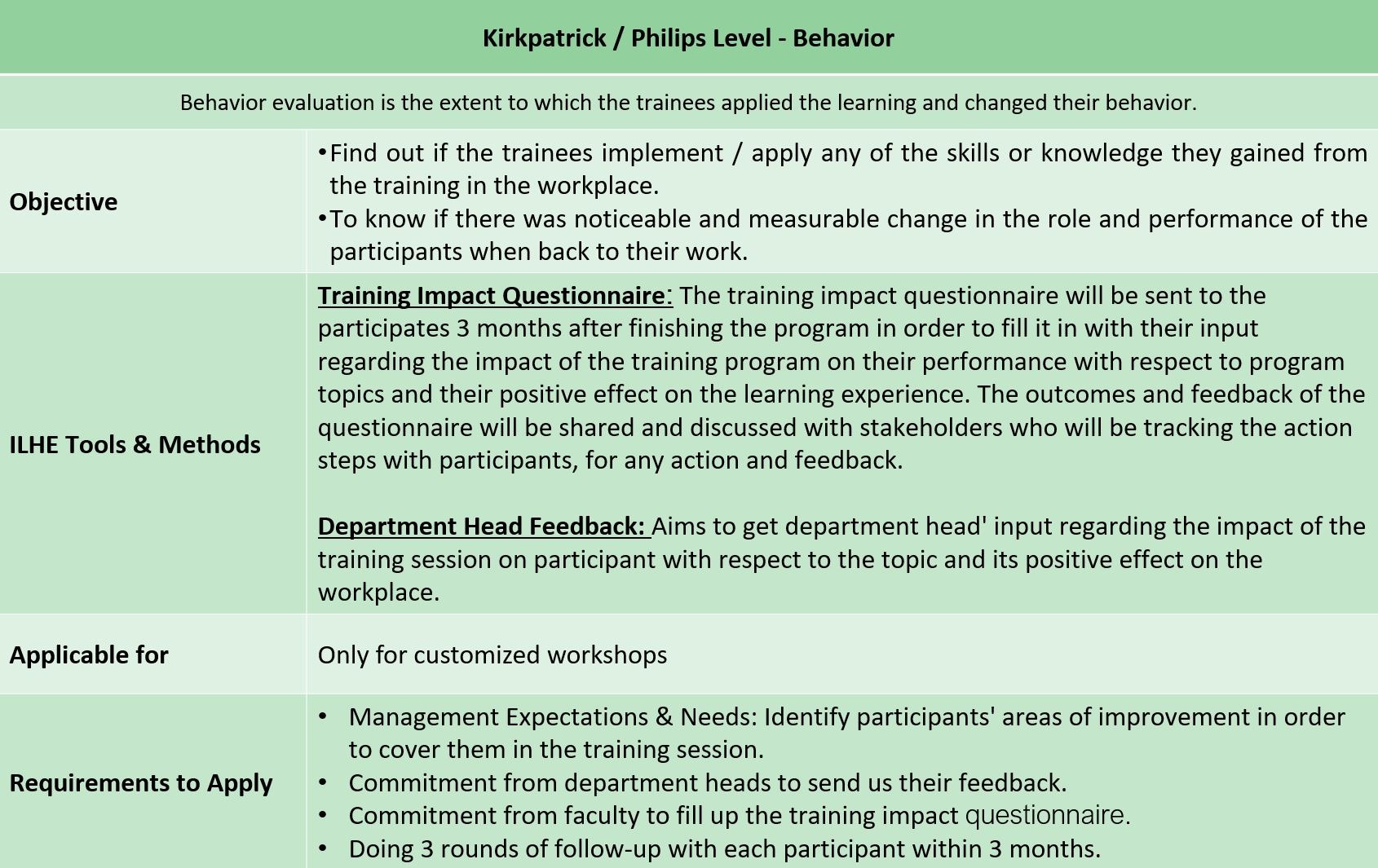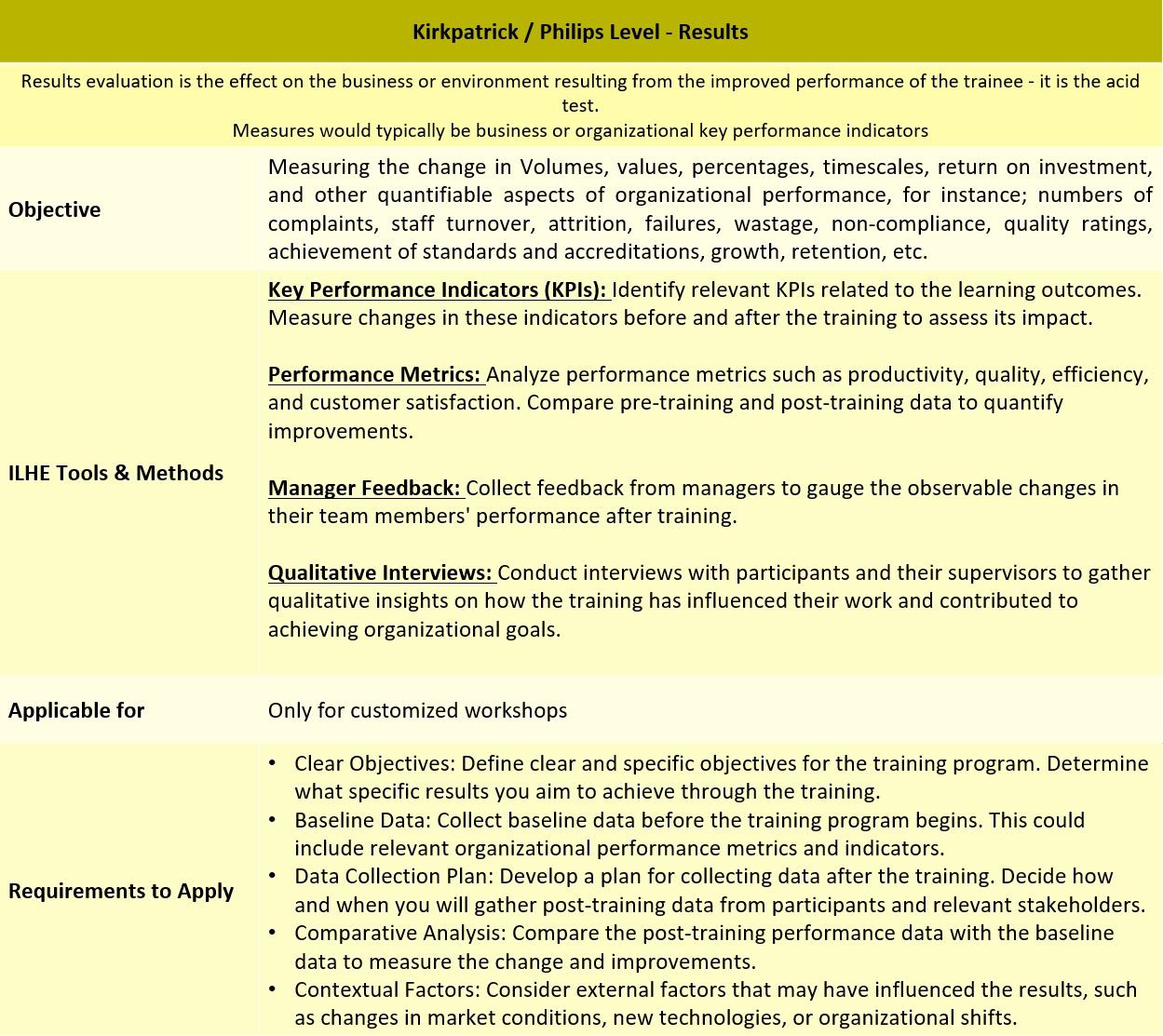Measuring the Effectiveness of Learning
As a learning expert, I believe our pride should stem from the impact we generate, not merely the number of workshops conducted. This perspective is the cornerstone of my approach.
To ensure robust evaluation, I rely on established models like the Kirkpatrick/Phillips framework. This Methodology not only provides the capability to evaluate program performance but also improves the design of programs for optimal impact.

My assessment toolkit encompasses a blend of qualitative and quantitative techniques. I employ training impact questionnaires to glean insightful participant feedback, on-the-job task evaluations to ascertain application in real work scenarios, and pre- and post-assessments to quantify knowledge enhancement. Each level of impact assessment is a distinct layer in the intricate process of gauging program effectiveness.
The accompanying diagrams visually illustrate the toolkit I deploy for each assessment level. These tools collectively provide a comprehensive framework to measure the impact of training, ensuring a meticulous analysis that reveals the true effectiveness of the program at every level.




Here are some real examples of my work in measuring the effectiveness of learning:
- Dubai Islamic Bank: Calculated the return on investment (ROI) for 18 soft skills training programs conducted across different departments, benefitting a total of 200 employees.
- Al Ain University: I led a project focused on measuring the performance change resulting from a comprehensive customer service program. This project aimed to assess the impact of the training on the participants' performance, demonstrating the effectiveness of the learning initiative.
In addition to the above-mentioned projects, I have consistently measured the effectiveness of all the programs I've managed, spanning from level 2 to level 4 of evaluation. This comprehensive approach involves assessing participants' knowledge acquisition, skill application, and performance impact. I ensure that the measurement process is aligned with the available information and resources from the respective companies, resulting in a thorough analysis of each program's outcomes.
Post a comment